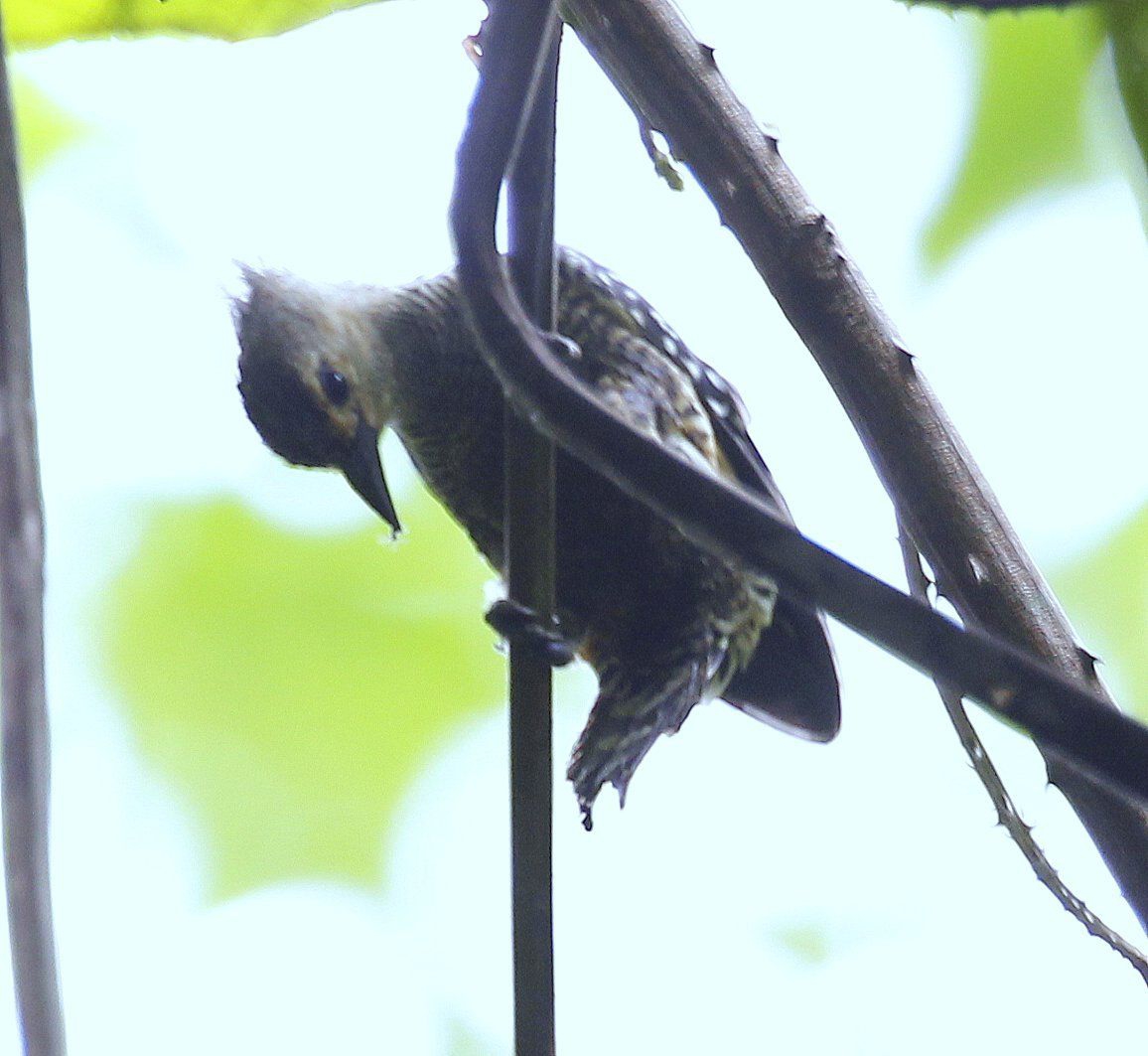| Citation |
|
Description |
Geographic Range [top]
Range Description: Meiglyptes tristis is restricted to western Java, Indonesia, where it is described as rare (Winkler et al. 1995, del Hoyo et al. 2002, M. Lammertink in litt. 2014).
Countries occurrence:
Native:
Indonesia
Additional data:
? Continuing decline in area of occupancy (AOO): Unknown
? Extreme fluctuations in area of occupancy (AOO): No ? Estimated extent of occurrence (EOO) - km2: 62000
? Continuing decline in extent of occurrence (EOO): Unknown ? Extreme fluctuations in extent of occurrence (EOO): No
? Continuing decline in number of locations: Unknown
? Extreme fluctuations in the number of locations: No
? Upper elevation limit (metres): 1100
Range Map: Click here to open the map viewer and explore range.
Population [top]
Population: There are no published population estimates but the species appears to be very rare. Van Balen (1999) did not record it in any of the 19 Javan forest fragments he surveyed whereas all other woodpecker species on Java were recorded in between two and ten of the fragments (M. Lammertink in litt. 2014). The total population is likely to be fewer than 2,500 mature individuals.
Trend Justification: The population is suspected to be in decline owing to ongoing habitat destruction (del Hoyo et al. 2002).
Current Population Trend: Decreasing
Additional data:
? Number of mature individuals: 1000-2499 ? Continuing decline of mature individuals: Yes
? Extreme fluctuations: No ? Population severely fragmented: No
? Continuing decline in subpopulations: Unknown
? Extreme fluctuations in subpopulations: No ? All individuals in one subpopulation: Yes
? No. of individuals in largest subpopulation: 100
Habitat and Ecology [top]
Habitat and Ecology: The species is found in primary and secondary forests including rather open coastal habitats as well as inland (del Hoyo et al. 2002). It is most common at edges, around clearings and in areas of second growth in forest and uses mature rubber stands and orchards (Winkler et al. 1995, del Hoyo et al. 2002).
Systems: Terrestrial
Continuing decline in area, extent and/or quality of habitat: Unknown
Generation Length (years): 3.5
Movement patterns: Not a Migrant
Threats [top]
Major Threat(s): On Java, most forest below 1,000 m, and in some areas up to 1,500 m, has been cleared (van Balen et al. 2011). Habitat and loss and degradation is driven primarily by agricultural expansion, logging, mining, development and uncontrolled fire, even within protected areas.
Conservation Actions [top]
Conservation Actions: Conservation and research actions underway
No targeted actions are known.
Conservation and research actions proposed
Clarify the range and obtain a population estimate. Determine its precise ecological requirements and its ability to persist in degraded and fragmented habitats. Ensure the effective protection of existing protected areas in which it occurs.
Citation: BirdLife International. 2016. Meiglyptes tristis. The IUCN Red List of Threatened Species 2016: e.T22727198A94943337. http://dx.doi.org/10.2305/IUCN.UK.2016-3.RLTS.T22727198A94943337.en. Downloaded on 17 May 2017.
Disclaimer: To make use of this information, please check the .
Feedback: If you see any errors or have any questions or suggestions on what is shown on this page, please provide us with feedback so that we can correct or extend the information provided
|

